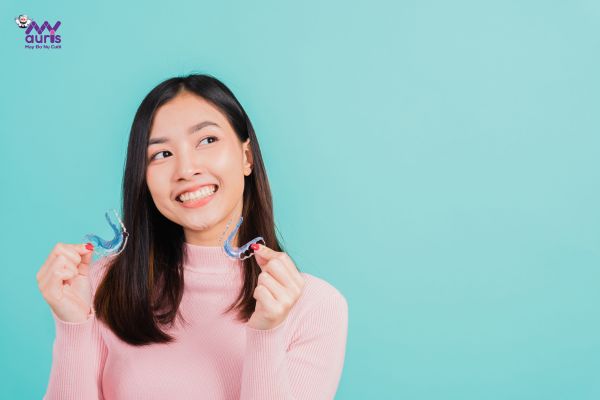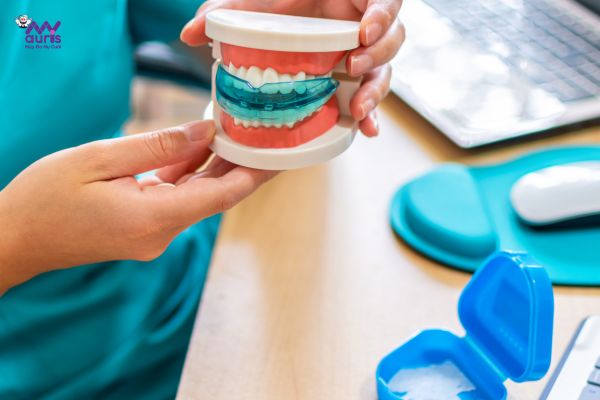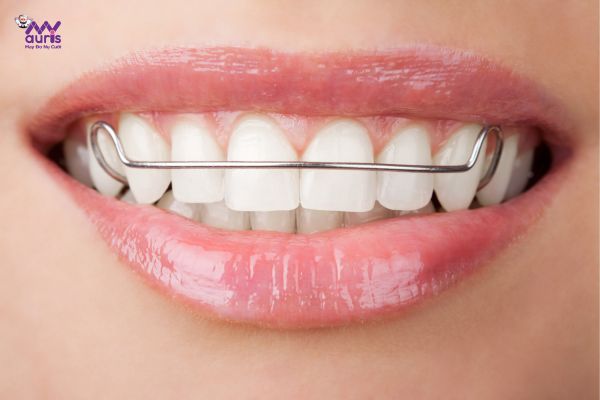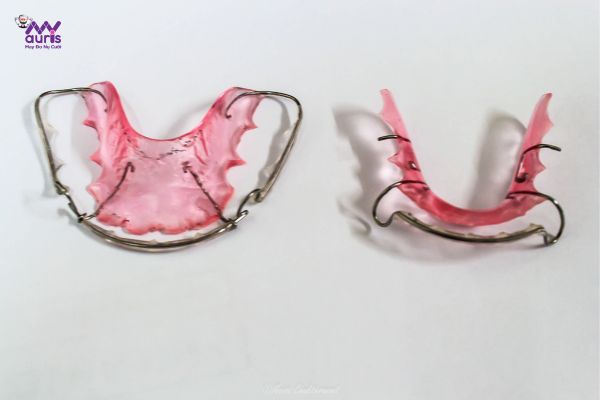After a long period of orthodontics, retainer braces are an important stage to stabilize the position of the teeth. Complying with this stage helps braces be successful, achieve good results and maintain long-term results. So how long does retention braces take? Let’s answer with My Auris as well as learn more about how to maintain after braces through this article.
What is retainer braces?
After the orthodontic period is complete, the doctor will remove the appliance from the teeth and guide the bracer to choose the appropriate retainer. This phase is called post-braces maintenance.
People with braces need to strictly follow this stage and avoid being subjective because the teeth just removed from braces are not really stable. Furthermore, human teeth are always moving and tend to shift throughout life. Therefore, after removing braces without using an appliance to maintain the results, the new position for the teeth will cause the teeth to move crookedly and return to the old position.

Retainers are called retainers. Retainers come in many types with many different materials and sizes. Depending on needs, preferences and economic conditions, choose the appropriate maintenance function.
How long does dental braces last?
The length of time braces last depends on the condition of each person’s teeth and the doctor gives appropriate advice. Normally, the time to wear a retainer after braces usually lasts from 6-12 months or possibly longer depending on the condition and strength of the jawbone. In particular, during the first 4-6 months after braces are removed, braces users need to wear them at least 20 hours/day for effective results. Then, keep wearing your jaw every night when you go to bed.

Can I not wear a retainer after braces?
Many people go through quite a long period of braces and orthodontics and when it comes time to remove the braces, it’s like nothing.burden. Therefore, many people do not want to use the retainer function. So is this possible?
According to structure, teeth are parts placed in the jawbone, surrounded by periodontal ligament. Periodontal ligaments have the ability to remember the old position of the teeth. Therefore, after orthodontics is completed without using retainer braces, the memory of the original position of the periodontal ligament will cause the teeth to return to their previous position.
In addition, after a long period of braces, the teeth are subjected to tightening force, the tissues around the teeth such as gum tissue, periodontal tissue and especially the tooth root socket are sensitive and cannot firmly fix the position for the teeth. Therefore, it is necessary to use a retainer to stabilize the position of the teeth after braces, avoiding misalignment and shifting.

So, retainer braces is a mandatory stage that must be followed after braces. This helps bring high and long-lasting orthodontic results. If you skip this stage, it will be extremely costly and time consuming for braces, which will be considered a waste.
Current types of retainers
Similar to orthodontic appliances, retainers have two types: fixed and removable. Each type also has its own advantages and disadvantages, specifically as follows:
Metal fixed retainer
This is a type of jaw made from steel wire of many sizes, twisted or straight shapes and is fixed to the inside of the front teeth (teeth number 1, 2, 3) by Composite.
Advantages
- Fixed jaw so there is no chance of forgetting to wear a retainer.
- The metal wire is attached to the inside of the tooth so it is difficult to detect, ensuring aesthetics.
Disadvantages
- Jaws can cause scratches to the mouth, tongue, and soft tissue damage when eating and drinking.
- Difficult to clean between teeth, easily leading to tooth decay and bad breath.
- Discomfort when wearing jaw due to lump.

Removable metal retainer
This is a type of retainer made from metal wire. When attached, it hugs the front teeth between the two canines and is attached to an acrylic mold on the roof of the mouth or underneath the wearer’s tongue.
Advantages
- Easy to remove and install, bringing convenience in living, eating and oral hygiene.
- High durability, can be worn for a long time without having to replace it.
Disadvantages
- The metal archwire is attached to the outside, which is less aesthetically pleasing.
- Because it is easy to remove and install, I often forget to wear my jaw.
- Not storing properly can cause broken or broken jaws. Reworking the function may incur additional costs.

Plastic removable retainers
This type of jaw is made from clear plastic transparent, hugs each person’s dental arch and is individually designed according to each person’s jaw shape.
Advantages
- Brings high aesthetics due to being made from transparent plastic
- Easy to remove and install, bringing many conveniences when eating, drinking, and oral hygiene.
- The jaw is designed according to each person’s jaw shape, so it applies force effectively.
Disadvantages
- Because it is easy to disassemble and assemble, users easily forget it, lose it, don’t wear it often, and easily drop it.

Some notes Notes when using retainers
To use retainers properly and protect oral health, people need to pay attention to:
Using and cleaning retainers
- Must be cleaned and sanitized every day. Specifically, rinse with cold water, then clean the jaw gently with a soft-bristled toothbrush and toothpaste.
- Each time you remove the retainer, you should put it in a box to avoid breakage, breakage, or damage
- Do not put the retainer in hot water, especially the transparent one.
How to eat and drink
Wearing a retainer can still eat and drink, but prioritize soft, easy-to-chew foods, avoid using too much chewing force.
In addition, avoid foods high in sugar, starch, carbonated soft drinks, hard, crunchy foods.
Hopefully the information in the article helps people better understand retention braces and adhere well to maintaining long-term braces results. If you still have concerns, please contact My Auris dentistry for more detailed advice and answers
Anh Thy





